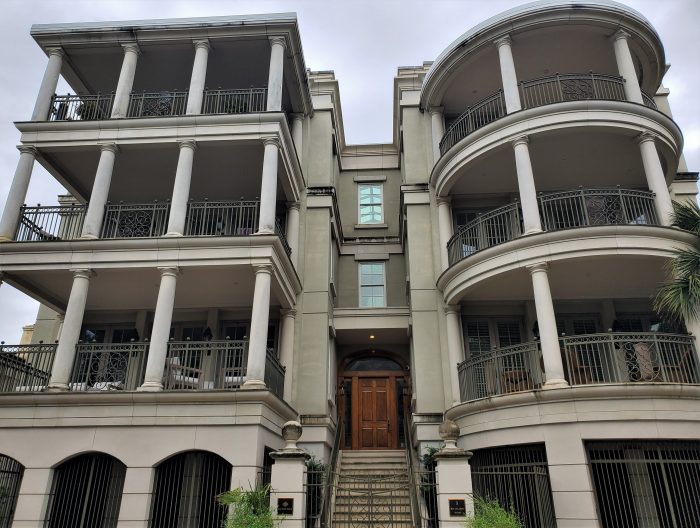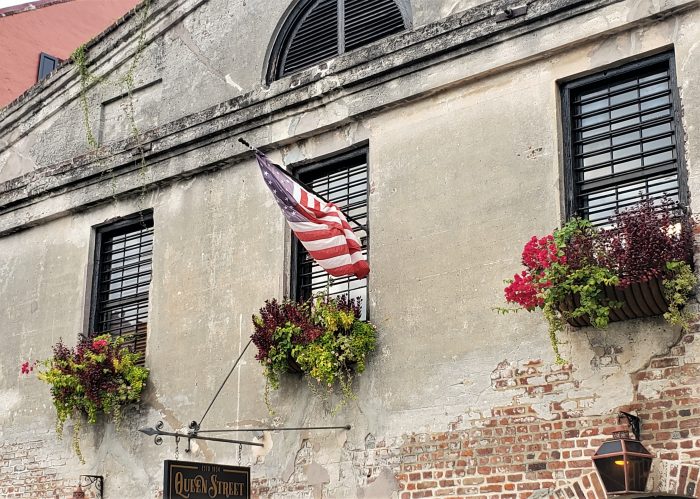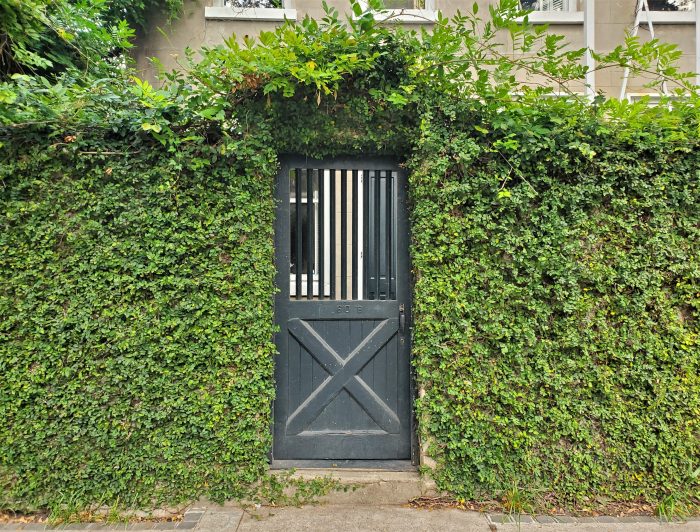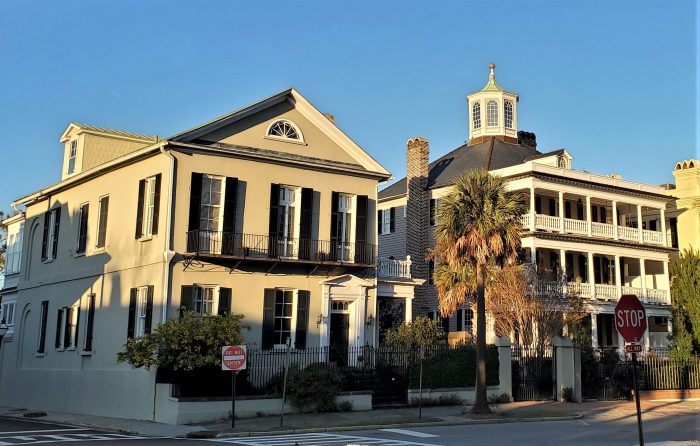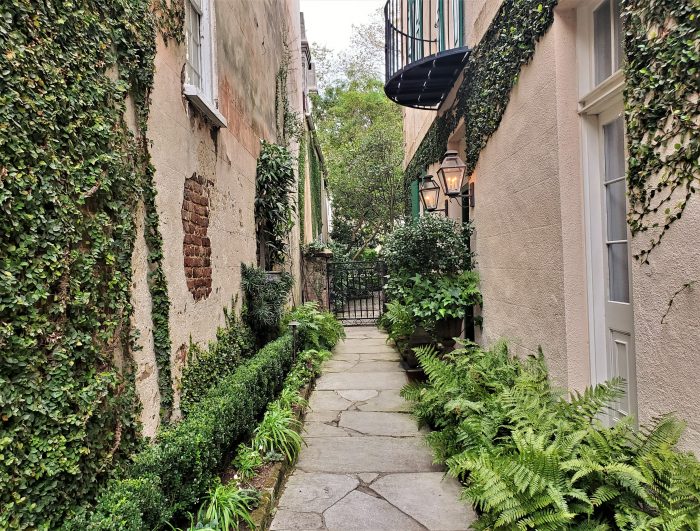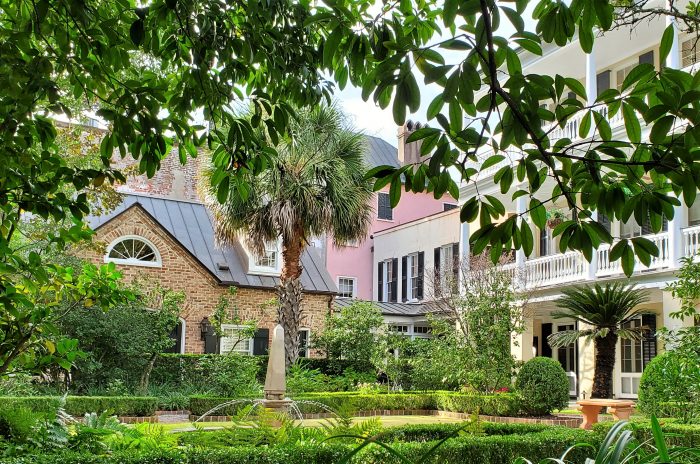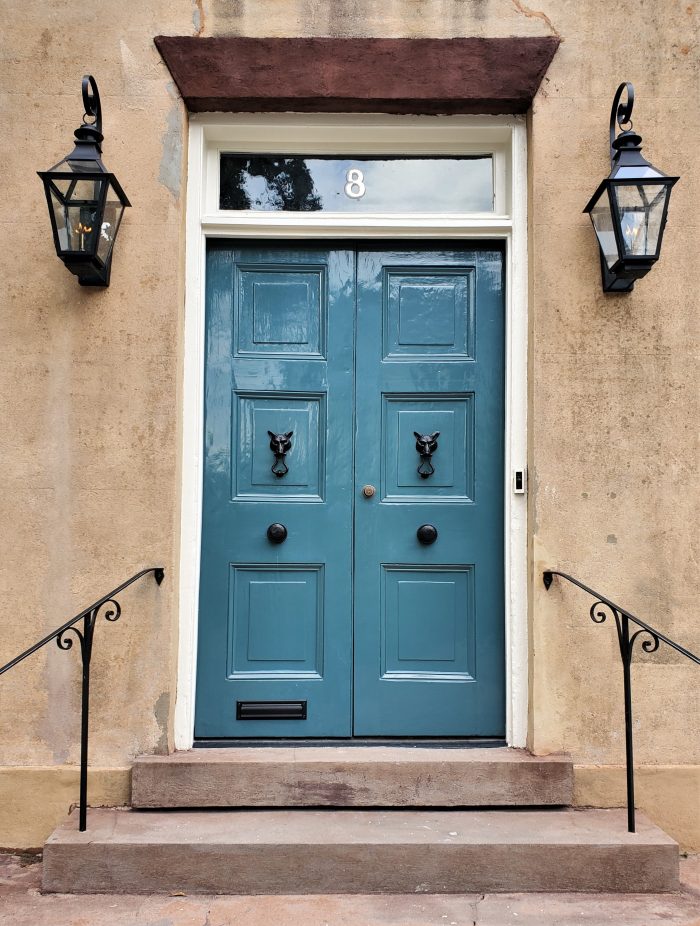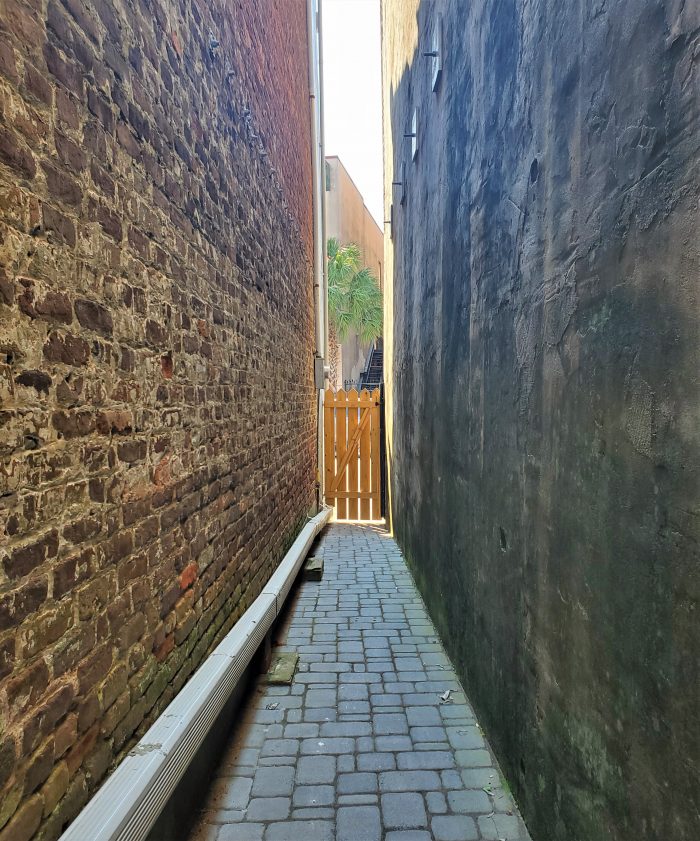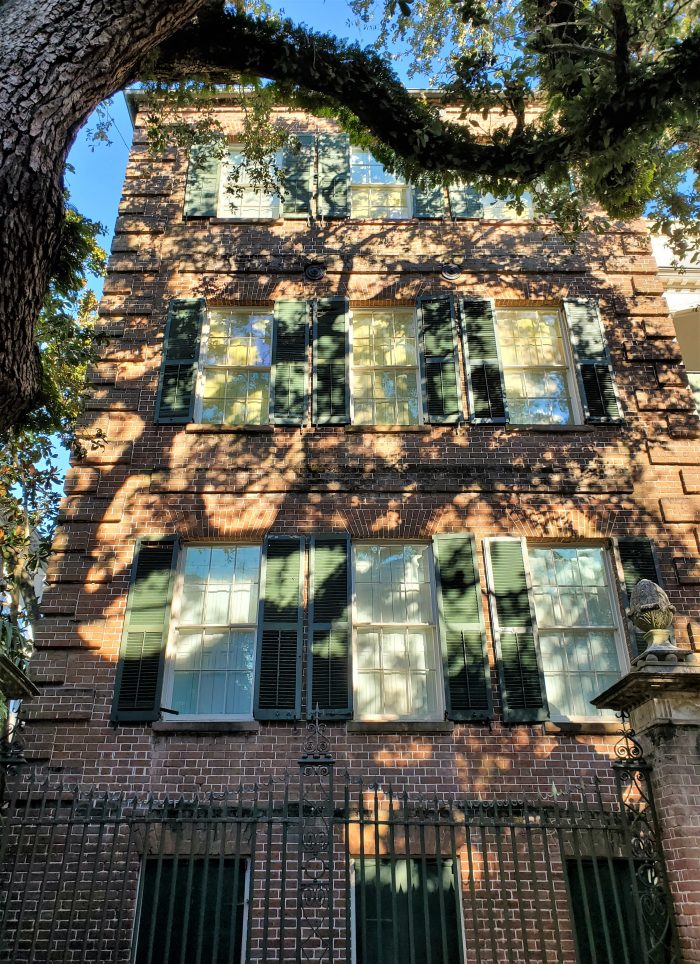This condo building is relatively new and can be found along the back of Waterfront Park. It is modeled after the famous “Compromise House” on East Battery, where a young John F. Kennedy had an office while in the navy (before being shipped off to take control of PT-109).
St. Michael’s Alley
The view from Meeting Street into St. Michael’s Alley…
Queen Street Playhouse
Formerly known as the Footlight Players Theater, this space has been rebranded as the Queen Street Playhouse. Home to the oldest theater company in Charleston, the Footlight Players, the building was a cotton warehouse before they moved in.
Hole-In-The-Wall
This cool hole-in-the-wall door can be found on Meeting Street, just a short ways down from the beautiful colonial St. Michael’s Church.
South Battery Sun
The morning sun hitting the tops of some of the beautiful houses on South Battery. The Col. John Ashe House on the right was built around 1782, and is a monument to the shipping trade (which is how the owner became wealthy). In addition to the cupola on the top, which is thought to have been used as a lighthouse to help guide ships in to Charleston harbor, the pegs used in the construction are the same that were found on the sailing ships.
Queen Street Beauty
This little path leads from Queen Street to the front door of the house on the right, which was constructed in 1796. The original land grant for the property dates back to 1694 and it is believed that the original house burned down in the fire of 1796.
Legare Garden
This beautiful garden belongs to the 1850 house at 39 Legare Street. I wonder if Legare the Lowcountry Lizard lives there.
Cool Door
This cool door is on a house on St. Michael’s Alley that was designed by the famed architect EB White in 1848. Not only is he a great architect, he shares his name with the creator of Charlotte’s Web and other wonderful books 🙂
Tight Squeeze
Between downtown buildings you can often find a tight squeeze of an access path. If you exited this one and turned left, you would be walking down King Street — right past the wonderful old cinema, the American Theater, which was appeared on the other side of the screen in the film The Notebook.
Pineapple Gates House
A sun dappled late afternoon view of the street side of the famous Pineapple Gates House, aka the Simmons-Edwards House, on Legare Street. Love the shadows of the live oak tree.
- « Previous Page
- 1
- …
- 52
- 53
- 54
- 55
- 56
- …
- 188
- Next Page »
